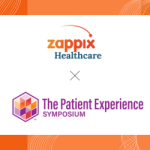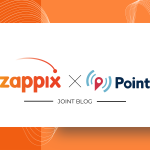The AI Inflection Point in Healthcare
Healthcare stands at a pivotal moment. The convergence of digital transformation, post-pandemic strain, and shifting patient expectations has accelerated the demand for smarter, more scalable systems. Generative AI introduces a fundamentally different capability: the power to create, summarize, and personalize content, interactions, and workflows at scale.
Recent perspectives, like those shared by McKinsey & Company, highlight the tremendous promise of generative AI in healthcare, emphasizing its potential to transform administrative workflows, enhance clinical operations, and improve patient communications. As leaders consider their next move, three impact areas stand out: increasing operational efficiency, improving workforce productivity, and deepening patient engagement.
Operational Efficiency: Cutting Through the Noise
In healthcare, inefficiency is a barrier to better care. From scheduling delays to redundant paperwork, the administrative weight carried by healthcare systems has grown heavier over time. And while these processes are essential, they often pull time and focus away from the patient.
Generative AI offers an opportunity to change that. By handling repetitive documentation, summarizing clinical notes, or drafting prior authorization requests, AI tools can take on the tasks that bog down staff and slow patient flow. The goal isn’t to replace human judgment but to support it—making systems lighter, faster, and more responsive.
McKinsey points to early signs of this shift, with health systems already seeing efficiency gains through AI-powered automation. Real progress, however, will take thoughtful integration into workflows and alignment with staff needs.
Leaders should be asking, where are the hidden inefficiencies in our organization? Which tasks drain our teams without adding value? And perhaps most importantly, how can we redesign our processes to work better for both staff and patients?
Operational efficiency isn’t about doing more with less. It’s about doing the right things—faster, smoother, and with fewer barriers in the way.
Workforce Productivity: Enabling People to Do Their Best Work
Those in the healthcare industry are giving their best effort, but dealing with a system that is unable to support and meet their needs has its consequences. Burnout is at historic highs, and turnover threatens continuity of care. Generative AI presents an opportunity not to replace human expertise but to augment it.
Gen AI is capable of automating note-taking during patient visits and even providing real-time decision support. This frees up clinicians to focus on complex cases, improve outcomes, and spend more meaningful time with patients. Importantly, this co-pilot model reinforces the human role in healthcare instead of diminishing it.
In operations, AI-enhanced tools can also improve how staff engage with systems, reducing training time and simplifying workflows. The productivity gains here are not just measured in minutes saved—they’re seen in higher satisfaction and lower attrition.
Patient Engagement: From Passive Recipient to Active Participant
Today’s patients expect their healthcare experiences to mirror the simplicity and customization they receive from consumer tech platforms. They want communication that is proactive, personalized, and convenient. Generative AI can help make this a reality.
Through conversational interfaces and hyper-personalized content generation, AI enables new levels of engagement. Patients can receive tailored health education, reminders, and follow-ups—all at scale. These aren’t just nice-to-have features—they’re becoming essential tools for improving adherence, reducing no-shows, and boosting long-term outcomes.
McKinsey’s article underscores this shift, noting that leading organizations are investing in AI to strengthen continuity of care. But to truly move the needle, AI must enhance—not replace—the relationship between patient and provider.
Challenges and Considerations: Innovation with Guardrails
As generative AI gains traction in healthcare, organizations face serious questions about how to adopt it responsibly. Ethical concerns, regulatory demands, and the real-world complexity of implementation can’t be ignored.
Patient data is incredibly sensitive, so privacy safeguards and secure handling must come first. Any AI system touching that data needs clear boundaries and built-in protections.
There’s also the matter of trust. Without clear governance—who oversees the tech, how it’s used, and what happens when it fails—AI adoption can raise more concerns than confidence.
And even with the right tools in place, success depends on people. Change management is essential: staff need support, training, and time to adjust. Technology alone won’t fix broken processes—it has to be part of a larger strategy built on trust and accountability.
The Zappix Perspective: Supporting Smarter Engagement
The rise of generative AI marks a broader shift in how healthcare organizations think about efficiency, experience, and scale. At Zappix, we see this moment not just as a tech evolution but as an opportunity to rethink how people interact with care systems.
Our work has always focused on simplifying engagement: giving patients easier ways to access information, complete tasks, and stay connected throughout their journey. That includes tools like digital self-service, proactive outreach, and automated workflows that reduce manual effort for both patients and staff.
Our role is not to replace clinicians or caregivers, but to remove the digital friction that stands between them and the people they serve.
Read the McKinsey article here





